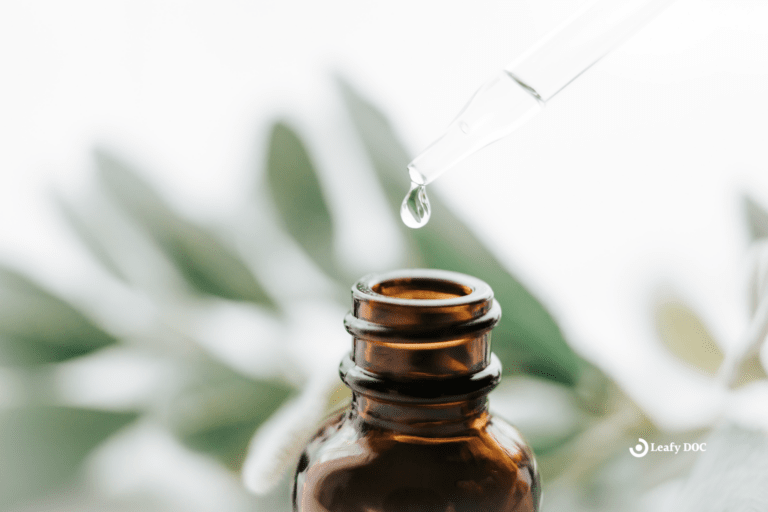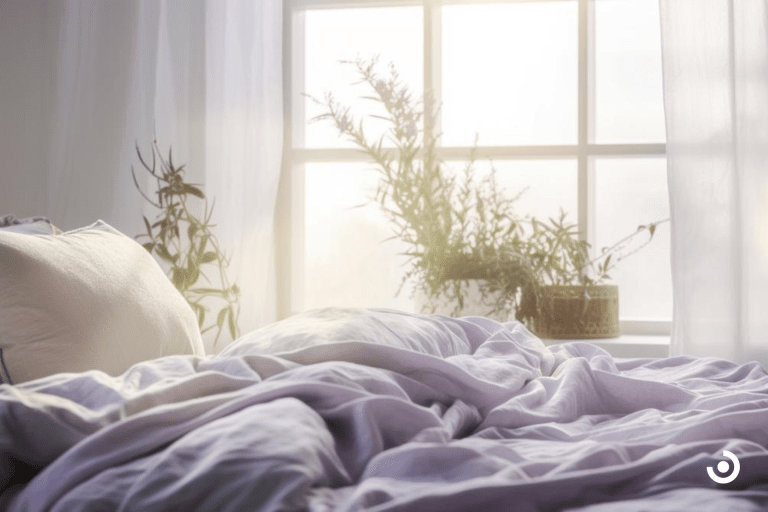What Are The Early Signs You Have A Male Cannabis Plant?
by Haley Mills · October 18, 2023
Find out the early signs of a male cannabis plant and avoid wasting time growing the wrong plants. Click here now to discover if your plants are male or female!

Are you a cannabis grower who wants to ensure a bountiful harvest of potent buds? If so, it is crucial to be able to identify male cannabis plants early on.
Male plants can ruin your crop by pollinating the female plants and producing seeds instead of the desired resinous flowers. Fortunately, early signs can help you distinguish between male and female cannabis plants, allowing you to take the necessary steps to prevent pollination and maximize your yield.
Differentiating between male and female cannabis plants is essential for any grower. While both sexes have their unique roles in the plant’s lifecycle, male plants can be detrimental to those aiming for high-quality buds.
The early signs of male cannabis plants include the appearance of small sac-like structures called pollen sacs, which contain the plant’s reproductive material. These sacs can be found in the nodes where branches and leaves meet the main stem. By recognizing these early signs, growers can immediately remove male plants and prevent pollination, ensuring that their female plants can continue to produce the resinous, cannabinoid-rich flowers desired by cannabis consumers.
Why Is Sexing Marijuana Plants Important?
Sexing marijuana plants is a key step in successful cannabis cultivation. Male and female plants serve different roles, and identifying them early helps you meet your grow goals—whether that’s harvesting potent buds or producing seeds.
If your goal is to grow high-quality, cannabinoid-rich buds, removing male plants early is essential. When left unchecked, male cannabis plants will pollinate females, causing them to produce seeds instead of the dense, resinous flowers preferred by most growers.
However, if you’re cultivating cannabis for seed production, allowing a few male plants to remain can be beneficial. It all comes down to your objectives.
By identifying plant sex during the pre-flowering stage, you can protect your harvest, boost yield quality, and manage your crop more efficiently—making sexing an essential practice in cannabis cultivation.
Identifying Male Cannabis Plants
If you notice small, sac-like structures called pollen sacs on the branches of your cannabis plant, it clearly indicates that you have a male plant. These pollen sacs produce pollen necessary for the plant to reproduce.
Male cannabis plants usually develop these sacs earlier than female plants, making them easy to identify during the early stages of growth.
Another sign of a male cannabis plant is the absence of pistils, the small hair-like structures that emerge from the nodes of female plants. Instead, male plants will have small, round structures called stamen, which eventually develop into pollen sacs. These stamen can be found at the nodes of the plant, often clustered together in groups.
Differentiating Between Male and Female Plants
Male plants typically produce pollen sacs in clusters, found in the nodes where the leaves meet the stem. The sacs are usually greenish-yellow in color and have a round shape. They may also have a small stem attached to them. Male plants do not produce flowers, as their main purpose is to produce pollen for fertilization.
On the other hand, female cannabis plants produce flowers, which are often referred to as buds. These buds are covered in small hair-like structures called pistils. The pistils are typically white or orange in color and protrude out from the buds.
Unlike the pollen sacs on male plants, the pistils on female plants are the reproductive organs that catch and hold the pollen for fertilization. Female plants also tend to have a more bushy and full appearance compared to male plants.
Early Signs of Male Cannabis Plants
Here are some early signs that can help you identify a male cannabis plant:
- Pollen sacs: As mentioned earlier, pollen sacs clearly indicate a male plant. These sacs contain pollen, which is necessary for fertilization and reproduction.
- Lack of pistils: Male cannabis plants don’t produce pistils, the small hair-like structures found on female plants. Instead, they focus their energy on developing pollen sacs.
- Stalk thickness: Male plants tend to have thicker and sturdier stalks compared to their female counterparts. This is because they need to support the weight of the pollen sacs.
- Pre-flowering stage: Male cannabis plants enter the pre-flowering stage earlier than females. This means that you may notice the development of pollen sacs before any signs of flowering or bud formation.
Early Signs of a Female Cannabis Plant:
- Pistils and Pre-flowers: Female plants form pear-shaped calyxes with fine, white or translucent pistils emerging from the top.
- No Pollen Sacs: Females do not produce clusters of sacs. Instead, their focus is on developing bud sites.
- Calyxes and Trichomes: As flowering progresses, female plants develop resin-coated calyxes—early indicators of bud development.
- Bushier Growth: Female cannabis plants are typically shorter, fuller, and more branched to support their flowering sites.
By observing these traits early, you can remove unwanted male plants from your grow space and protect your harvest from accidental pollination
When Should You Sex Marijuana Plants?
The best time to sex marijuana plants is during the pre-flowering stage, usually around 4 to 6 weeks after germination. This is when plants begin to show early signs of their sex through pre-flowers.
Identifying male plants early is key—they may show sooner than females and can pollinate them, leading to seed production instead of resin-rich buds. Regular inspection during this stage helps ensure a high-quality, unfertilized harvest focused on potency.
Why Growers Prefer Female Marijuana Plants
Growers overwhelmingly prefer female marijuana plants because they are the ones that produce the large, resinous buds rich in THC and CBD, the primary compounds sought for both medicinal and recreational use.
Female cannabis plants develop potent flowers packed with cannabinoids and terpenes. In contrast, male plants produce pollen sacs instead of buds. If male plants remain in the grow space, they can pollinate female plants, leading to seed production instead of high-quality flowers. This pollination diverts the plant’s energy away from resin production, significantly lowering potency and yield.
By removing male plants early and focusing on cultivating females, growers can:
- Maximize cannabinoid concentration
- Avoid unwanted seeds
- Harvest higher-quality, more potent buds
In short, female plants = premium buds, while male plants = risk of pollination and reduced harvest quality. Managing plant sex is key to producing a successful, high-yield cannabis crop.
Preventing Pollination in Your Grow Space
Identify potential male cannabis plants by observing their distinct characteristics. Male cannabis plants typically have thinner and elongated leaves compared to female plants. The shape of their leaves resembles that of a spear or arrowhead.
In addition, male plants tend to have fewer branches and a taller, more lanky appearance. Another key characteristic to look for is the presence of small sac-like structures called pollen sacs. These sacs, which can vary in color from green to yellow, contain the pollen necessary for fertilization. If you notice these distinct characteristics on a plant in your grow space, it’s likely a male cannabis plant.
One effective method to prevent pollination is to practice regular plant inspections. By closely monitoring your plants, you can identify and remove any potential male plants promptly. Creating a separate growing area for male plants is another way to prevent pollination. This way, any pollen released by the male plants is contained and doesn’t come into contact with your female plants.
Understanding Male Plant Pollination Timing
Male cannabis plants begin producing pollen during the pre-flowering stage, usually around 4 to 6 weeks into growth. If not removed, they can continue releasing pollen until maturity. This can result in the fertilization of nearby female plants, causing them to produce seeds instead of resin-rich buds.
To prevent pollination and preserve flower quality, it’s important to monitor plants early and remove males as soon as pollen sacs appear.
Importance of Removing Male Plants
If your goal is to grow potent, resin-rich buds, you should remove male cannabis plants as soon as they are identified. Male plants produce pollen sacs instead of the cannabinoid-heavy flowers found on female plants. If allowed to remain, they can pollinate nearby females, causing them to produce seeds and divert energy away from bud development.
However, if you’re cultivating cannabis for seed production rather than consumption, keeping a few male plants can be beneficial. They’re essential for fertilization and future crop sustainability. Just be sure to isolate them properly to avoid accidental pollination of your main grow.
Ultimately, your approach should align with your cultivation goals—whether that’s maximizing bud quality or producing seeds for future use.
Here are four early signs that indicate you have a male cannabis plant:
- Look for preflowers: Male plants typically show preflowers earlier than females. These preflowers will develop into pollen sacs, which can be identified by their small, rounded shape and lack of pistils.
- Check for clusters: Male plants often produce clusters of pollen sacs, while female plants produce clusters of pistils. Look closely at the nodes where the branches meet the main stem to identify these clusters.
- Observe the growth pattern: Male plants tend to grow taller and have fewer branches compared to their female counterparts. They may also have thinner stems.
- Examine the nodes: Nodes are the points where branches or leaves grow from the main stem. Male plants often have a greater distance between nodes compared to female plants.
Frequently Asked Questions
How long does it typically take for male cannabis plants to start showing their early signs?
Male cannabis plants typically show their early signs within 2-4 weeks of germination. These signs include the development of small, sac-like structures called pollen sacs, which contain the male reproductive cells necessary for pollination.
Can male cannabis plants still produce resin and be used for extraction purposes?
Yes, male cannabis plants can produce resin, but it is usually in smaller quantities compared to female plants. However, they are not typically used for extraction purposes as their primary function is pollination.
Are there any visual differences between male and female cannabis plants in terms of leaf shape or color?
Yes, there are visual differences between male and female cannabis plants. Males tend to have thicker stems, fewer leaves, and a more elongated shape. Their leaves also have a different structure and may appear lighter in color.
What are the risks of keeping male cannabis plants in a grow space alongside female plants?
The risks of keeping male cannabis plants in a grow space alongside female plants include the potential for the male plants to pollinate the females, producing seeds instead of high-quality buds.
Is there any way to prevent a female cannabis plant from turning into a hermaphrodite?
There is no guaranteed way to prevent a female cannabis plant from becoming a hermaphrodite. However, maintaining stable environmental conditions, avoiding stress, and using feminized seeds can help reduce the likelihood of hermaphroditism.
Can you tell the gender of a marijuana seed?
No, you can’t determine the gender of a marijuana seed just by looking at it. The plant’s sex only becomes visible during the pre-flowering stage, typically three to four weeks after germination.
Can you turn a male marijuana plant into a female?
No, you can’t change a male marijuana plant into a female. Its sex is determined genetically at germination and cannot be altered later, even with environmental adjustments.
Last Updated: May 19, 2025
Get Approved for Your Medical Marijuana Card in Minutes!

Get Your Medical Card
Connect with a licensed physician online in minutes

Like This Article?
Share with your friends
Table of Contents
Keep Reading
-
9 Benefits Of RSO Oil For Medical Cannabis Patients
Explore the incredible benefits of RSO oil for medical cannabis patients. From pain relief to improved sleep, this powerful remedy is changing lives. Click now!
-
Should I Tell My Employer I Have a Medical Card? Weighing Risks and Benefits
Weigh the risks and benefits of “should I tell my employer I have a medical card” for informed decisions.
-
Improving Sleep Quality With Cannabis: Insights Into Sleep Disorders And Marijuana
Ready to improve your sleep quality? Learn how cannabis and marijuana can help alleviate sleep disorders and enhance your rest. Click now for valuable insights!



